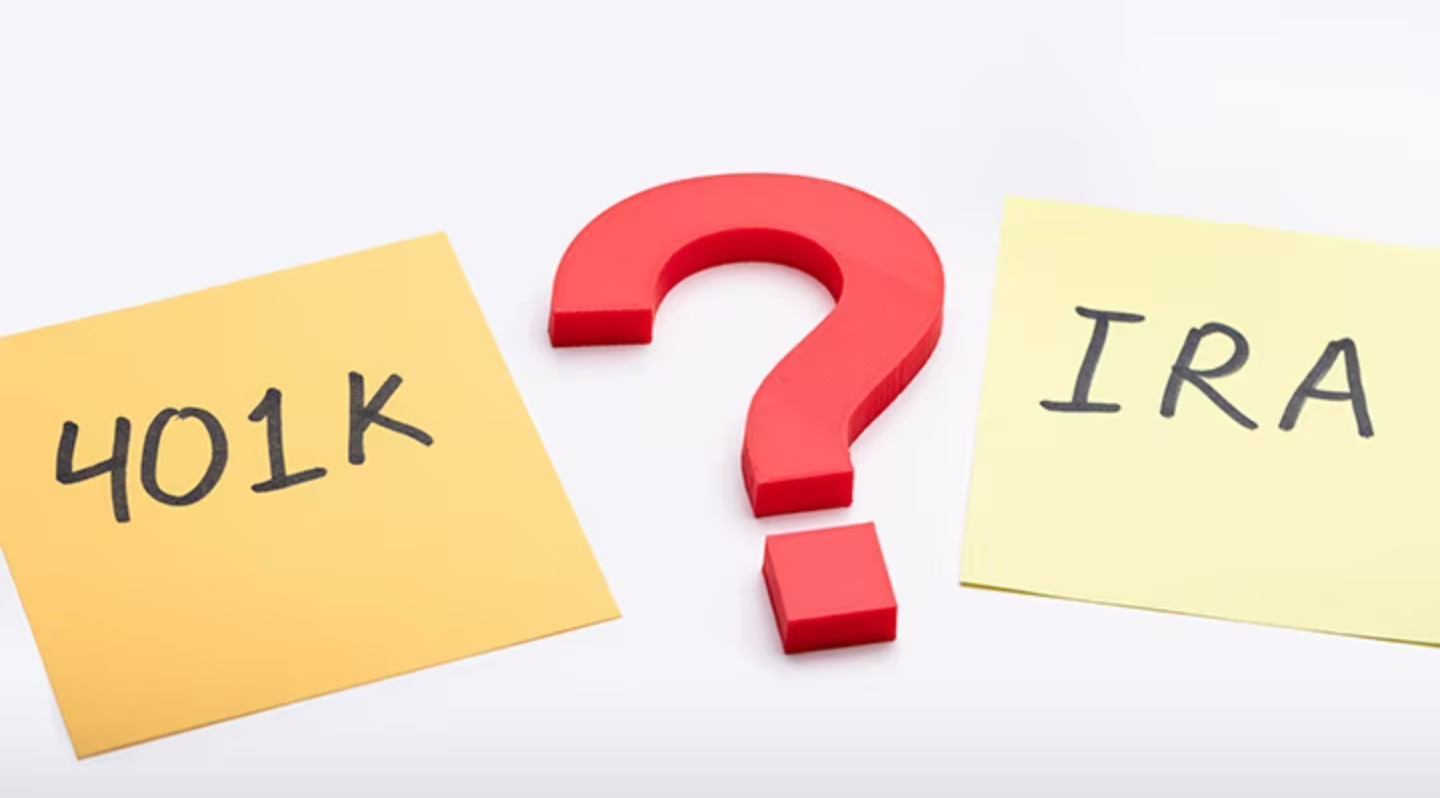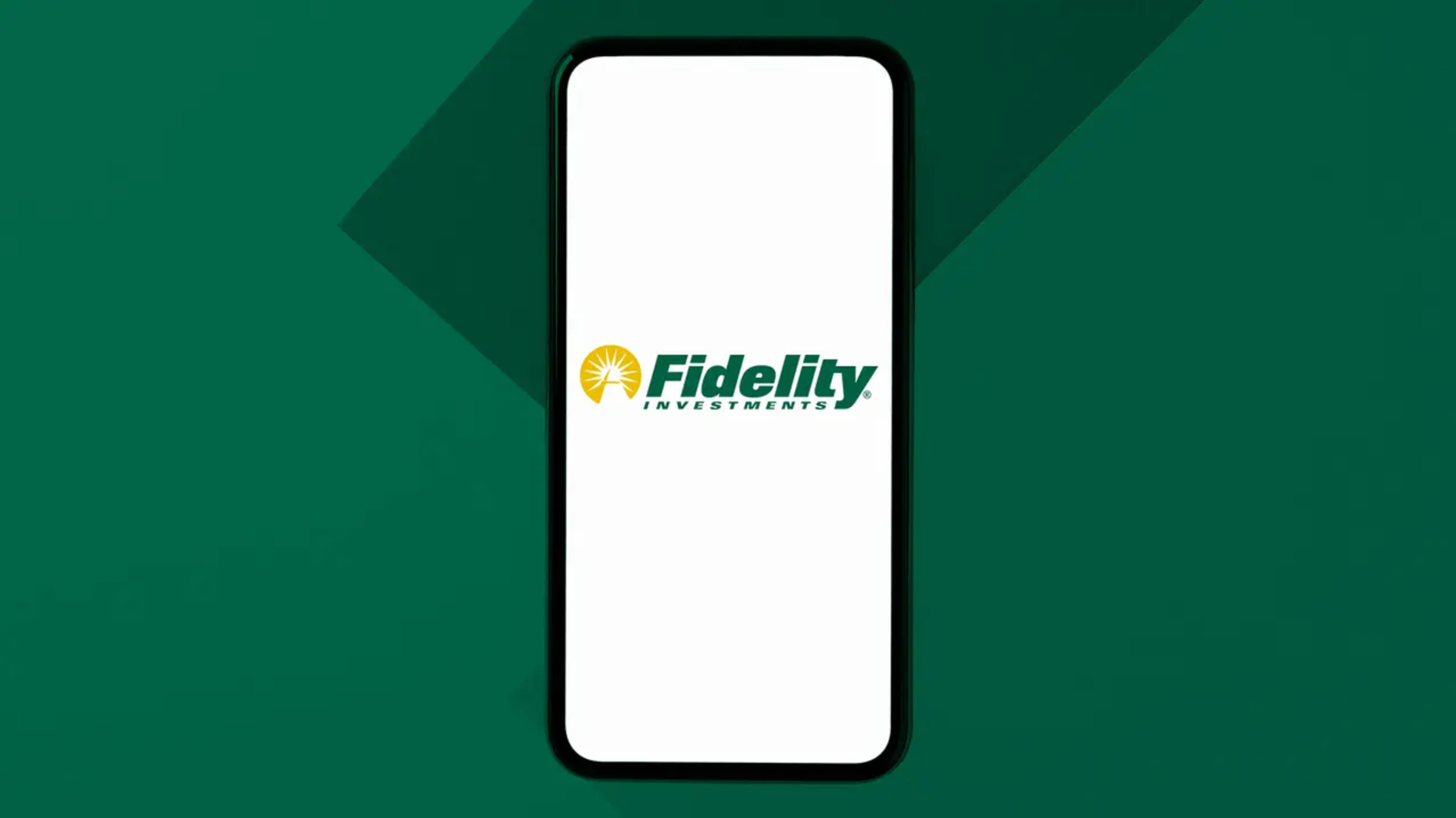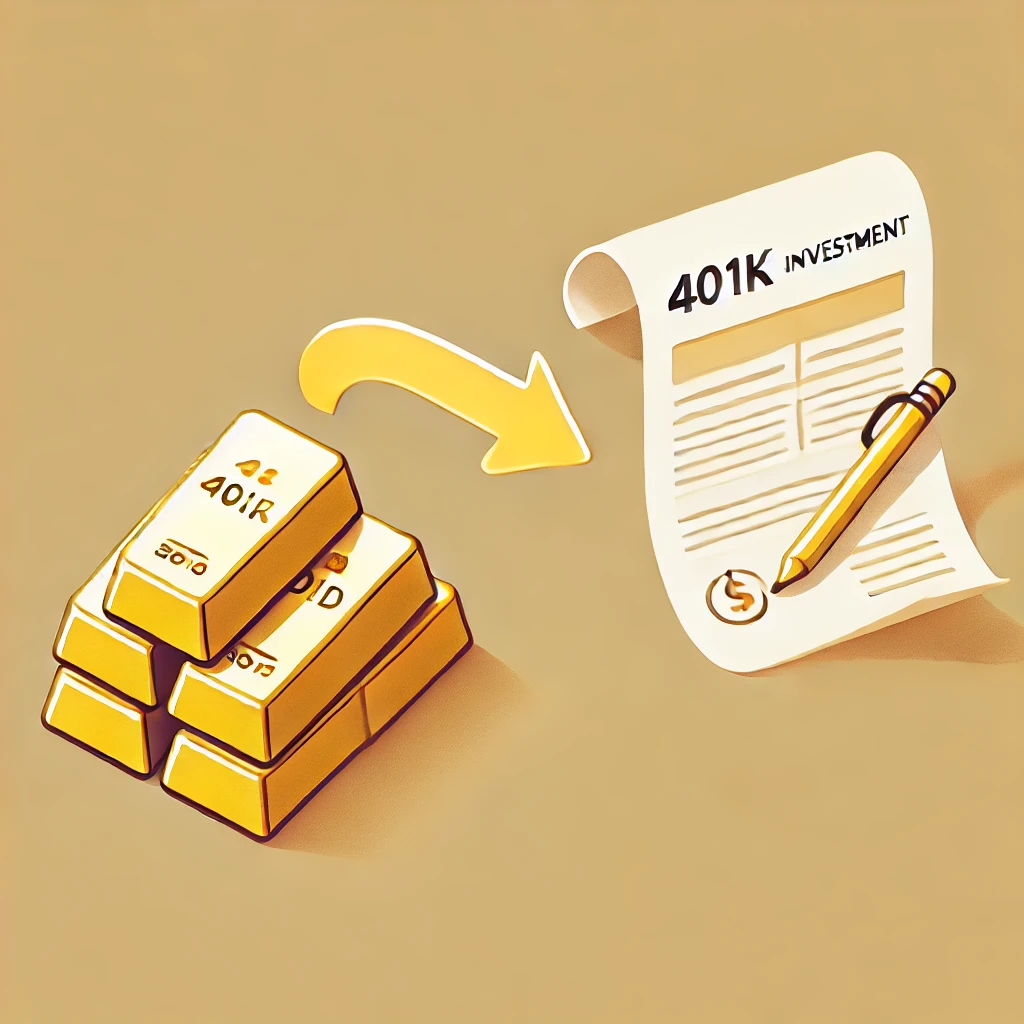Can You Roll a 401(k) into a SIMPLE IRA? A Complete Guide
This article compares 401(k) plans and SIMPLE IRAs, discussing their features, benefits, and restrictions. It explains the process of rolling over a 401(k) into a SIMPLE IRA, highlighting the tax advantages and steps involved in managing retirement funds effectively.
Abhinil Kumar
Author

Retirement plans are essential for securing financial stability in our later years. Among the myriad of options available, 401(k) plans and SIMPLE IRAs (Savings Incentive Match Plan for Employees Individual Retirement Account) are two popular choices. This blog delves into the specifics of each, explores the feasibility of rolling a 401(k) into a SIMPLE IRA, and outlines the associated benefits, restrictions, and steps involved.
Understanding 401(k) and SIMPLE IRA
What is a 401(k)?
A 401(k) plan is a qualified employer-sponsored retirement plan. Eligibility requirements typically include being at least 21 years old and working a minimum number of hours per year. Contribution limits for employees are determined by the IRS and can be adjusted annually. Employers have the option to match a percentage of employee contributions, typically up to a specific limit. Vesting rules determine when employees have full ownership of employer-matched contributions. 401(k) plans often offer a variety of investment options and may allow for loans and hardship withdrawals. Key features include:
- Employee Contribution Limits: As of 2021, employees can contribute up to $19,500 annually, with an additional $6,500 catch-up contribution for those aged 50 and above.
- Employer Contributions: Employers can match employee contributions, typically up to a percentage of the employee’s salary.
- Investment Options: 401(k) plans often provide a variety of investment options, including stocks, bonds, and mutual funds.
- Tax Advantages: Contributions are made pre-tax, and taxes are deferred until withdrawals are made in retirement.
What is a SIMPLE IRA?
Another retirement planning option is the SIMPLE IRA plan. This individual retirement account is specifically designed for small businesses. It allows employers and employees to contribute to the plan, with contributions being tax-deductible for the employer and tax-deferred for the employee. The main advantage of a SIMPLE IRA plan is its simplicity, with minimal administration required. However, the contribution limits are lower compared to 401(k) plans, and the employer is required to make contributions on behalf of eligible employees. Its main characteristics include:8
What SIMPLE Stands For
SIMPLE stands for Savings Incentive Match Plan for Employees. It reflects the plan’s purpose: to provide a simple and effective way for small businesses to offer retirement savings incentives to their employees, with matching contributions from employers to enhance employee benefits.
By understanding the documentation required, the reasons for its popularity among small businesses, and the meaning behind SIMPLE, employers and employees can better appreciate the benefits and logistics of this retirement planning option.
Required Documents to Open a SIMPLE IRA
To open a SIMPLE IRA, the following documents are typically required:
- Employer’s Adoption Agreement: This outlines the details of the SIMPLE IRA plan, including contribution methods and eligibility requirements.
- Employee Information: Personal and financial information for each participating employee.
- SIMPLE IRA Account Forms: Standard forms provided by the financial institution managing the SIMPLE IRA, used to establish the accounts for each employee.
- Summary Plan Description (SPD): Provided to employees, detailing the terms of the plan, contribution limits, and vesting schedules.
Why Small Businesses Prefer SIMPLE IRAs
- Ease of Administration: SIMPLE IRAs have fewer administrative requirements compared to other retirement plans like 401(k)s. There are no annual filing requirements with the IRS (e.g., Form 5500), making it easier for small businesses to manage.
- Lower Costs: Setting up and maintaining a SIMPLE IRA is generally less expensive than other plans, making it a cost-effective option for small businesses.
- Mandatory Employer Contributions: While this might seem like a drawback, the clear and straightforward contribution requirements (either a 3% match or 2% non-elective contribution) simplify budgeting for small businesses.
- Employee Attraction and Retention: Offering a retirement plan can help small businesses attract and retain employees, providing a competitive edge in the job market.
Importance of Retirement Savings
Retirement savings play a crucial role in securing a financially stable future for individuals. As the working years slowly come to an end, having a sufficient amount of savings becomes paramount for maintaining a comfortable lifestyle and covering everyday expenses. In an era where we are living longer than ever before, retirement savings have gained even more significance, as they provide a source of income and prevent individuals from becoming dependent on others or struggling financially during their golden years. Whether through pension plans, individual retirement accounts (IRAs), or employer-sponsored 401(k) plans, setting aside funds for retirement is a proactive step towards ensuring a secure and worry-free future. Understanding the importance of retirement savings and making informed decisions about financial planning can ultimately make a significant difference in an individual’s quality of life after they stop working.
Rolling Over a 401(k) into a SIMPLE IRA: Is It Possible?
Eligibility and Requirements
Rolling over a 401(k) into a SIMPLE IRA is generally not allowed under current IRS rules. However, there are certain conditions and nuances to consider:
- Separation from Service: Employees who have left or changed jobs and are no longer contributing to their previous employer’s retirement plan are generally eligible to perform a rollover. They can transfer the funds from their 401k into a Simple IRA to maintain the tax advantages and continue growing their retirement savings.
- Age Considerations: Individuals who have reached the age of 59¬Ω are also eligible for a rollover. The IRS allows individuals to access their retirement funds penalty-free once they reach this age, so they can transfer the 401k funds into a Simple IRA to have more control over their investments or to take withdrawals as needed.
- Two-Year Rule: SIMPLE IRA participants must wait two years from the date of first participation before transferring funds to another retirement plan. This rule applies to rollovers into other IRAs but does not facilitate direct rollovers from 401(k) plans.
Steps to Consider
If you’re looking to transition from a 401(k) to a SIMPLE IRA, consider these steps:
- Roll Over to a Traditional IRA: First, roll over your 401(k) funds into a Traditional IRA. This step preserves the tax-deferred status of your retirement savings.
- Wait for Two-Year Period: After participating in the SIMPLE IRA for two years, you can then roll over the Traditional IRA funds into the SIMPLE IRA, if desired.
Benefits of Rolling Over
Despite the complexity, there are benefits to consolidating retirement accounts:
- Tax Advantages: Rolling over funds maintains the tax-deferred status, avoiding immediate tax liabilities.
- Simplified Management: Managing fewer accounts simplifies financial planning and may reduce administrative fees.
- Investment Options: Depending on the IRA provider, you may have access to a wider range of investment options.

Restrictions and Limitations
While rolling over to a SIMPLE IRA has its advantages, it also comes with restrictions:
- Early Withdrawal Penalties: Withdrawals from a SIMPLE IRA within the first two years of participation are subject to a 25% penalty, higher than the 10% penalty for other IRAs.
- Contribution Limits: SIMPLE IRA contribution limits are lower than those for 401(k) plans, potentially affecting your ability to save larger amounts.
- Employer Contributions: The mandatory employer contributions in SIMPLE IRAs can be a limiting factor for some businesses compared to the optional employer matching in 401(k) plans.
Tax Advantages
Rolling over retirement funds into an IRA, including SIMPLE IRAs after meeting specific conditions, offers significant tax advantages:
- Tax-Deferred Growth: Contributions and earnings grow tax-deferred, meaning you only pay taxes upon withdrawal during retirement.
- Potential Tax Deductions: Contributions to a SIMPLE IRA may be tax-deductible, reducing your taxable income for the year.
Simplified Management of Retirement Funds
Consolidating retirement accounts can streamline your financial management. Here are some tips:
- Regular Monitoring: Keep track of all your retirement accounts to ensure they align with your financial goals.
- Automatic Contributions: Set up automatic contributions to consistently build your retirement savings.
- Diversification: Spread your investments across various asset classes to mitigate risk.
Seeking Advice from a Financial Advisor
Navigating the complexities of retirement plans and rollovers can be challenging. Seeking advice from a financial advisor can provide clarity and personalized strategies tailored to your specific needs. Advisors can help you:
- Evaluate Options: Understand the pros and cons of rolling over a 401(k) into various types of IRAs.
- Compliance Guidance: Ensure adherence to IRS rules and avoid potential penalties.
- Investment Strategies: Develop a diversified investment portfolio that aligns with your retirement goals.
Conclusion
While rolling over a 401(k) directly into a SIMPLE IRA is generally not permitted, understanding the alternatives and following the correct procedures can help you manage your retirement funds effectively. By leveraging the tax advantages, simplifying account management, and seeking professional advice, you can optimize your retirement savings strategy and work towards a secure financial future.
FAQs
- **Can I directly roll over my 401(k) into a SIMPLE IRA? **No, current IRS rules do not allow a direct rollover from a 401(k) to a SIMPLE IRA. However, you can first roll over your 401(k) into a Traditional IRA and then transfer those funds into a SIMPLE IRA after meeting specific conditions, such as the two-year participation rule.
- **What is the two-year rule for SIMPLE IRAs? **The two-year rule requires that funds in a SIMPLE IRA must remain in the account for at least two years from the date of first participation. During this period, you cannot transfer the funds to another IRA without incurring a penalty.
- **What are the tax benefits of rolling over a 401(k) to an IRA? **Rolling over your 401(k) to an IRA, including a SIMPLE IRA, allows you to maintain the tax-deferred status of your retirement savings. This means you won’t pay taxes on the funds until you withdraw them during retirement, potentially allowing for tax-advantaged growth.
- **What are the differences in contribution limits between a 401(k) and a SIMPLE IRA? **For 2021, the contribution limit for a 401(k) is $19,500 with an additional $6,500 catch-up contribution for those aged 50 and above. In contrast, a SIMPLE IRA has a lower contribution limit of $13,500, with a $3,000 catch-up contribution for those aged 50 and above.
- **Should I seek professional financial advice before rolling over my 401(k)? **Yes, consulting with a financial advisor is highly recommended. They can help you understand the implications of rolling over your 401(k) into different types of IRAs, ensure compliance with IRS rules, and assist in creating a personalized investment strategy that aligns with your retirement goals.


